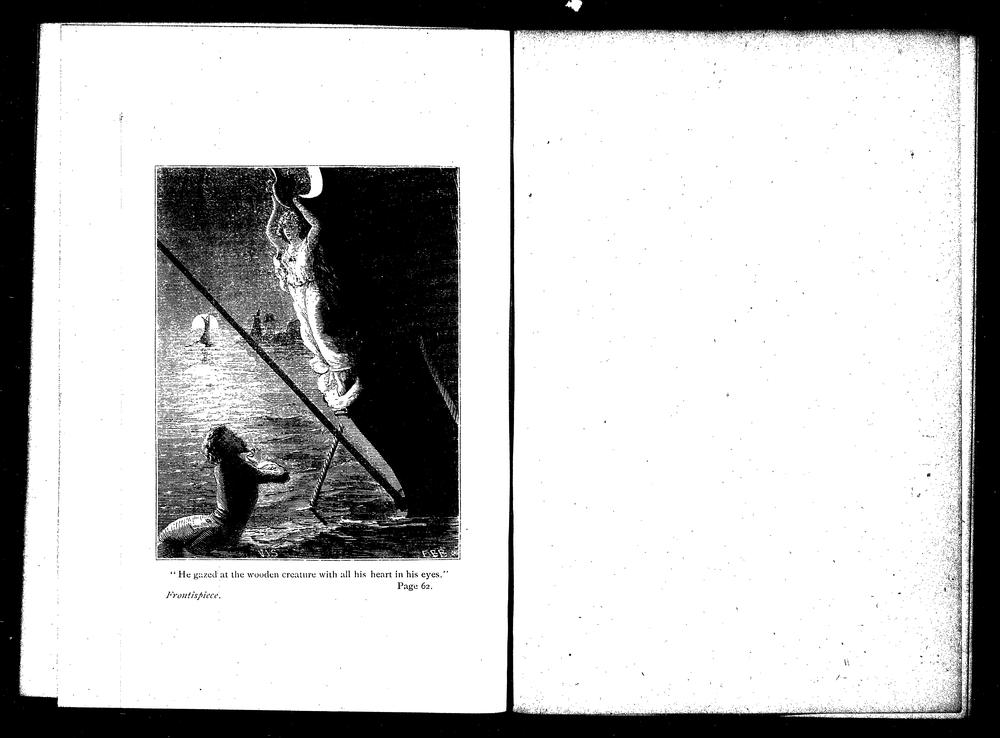Mermaids & Metaphors
“She was an unlucky creature from the first. She was too much alive for a wooden image, and too wooden to be a live woman, much less a goddess.”
Clara F(lorida) Guernsey’s The Merman and the Figure-Head, pg75
The Merman and the Figure-Head. Guernsey, Clara F. (Clara Florida), (b. 1836.). http://purl.dlib.indiana.edu/iudl/wright/VAC6568
Biography
Clara F(lorida) Guernsey was born on October 1, 1836 in Pittsford, New York. She spent the entirety of her obscurely documented life in Upstate NY. There is not much public information about her family, but it is known that her father was a good friend of the Seneca—including well-known chiefs Red Jacket and Corn Planter. Guernsey followed her father in befriending the Senecas, and she is remembered for organizing wagonloads of food to be taken to the reservation during a period of famine, eventually being adopted into the tribe.
Publications
Guernsey began writing articles for Gleason’s Pictorial, later moving on to even more well-known periodicals like the Atlantic and Cosmopolitan. She began writing short children’s novels in the mid-1860s to be published by the American Sunday School Union (ASSU). Almost all her works including collections of fairytales (Christmas Greens, 1865; domestic fictions (Aunt Priscilla’s Story, 1867; Elmira’s Ambitions, 1875), and adventure stories (The Silver Rifle, 1871; The Shawnee Prisoner, 1877 were published by them in Boston, Massachusetts. The work of focus, The Merman and the Figure-Head, was published separately by Lippincott & Co in 1871.
The Merman and the Figure-Head
The plot is fairly straight-forward— a merman falls in love with a wooden figure-head and follows it across the sea, only to have it crush him to death in the end. The narrative is similar to Hans Christian Anderson’s Den lille havfrue (The Little Mermaid), which Guernsey makes reference to throughout the novel; however; she adds layer after layer of humor, imagery, and characterization that allows the novel to reach new heights. Using various literary techniques, The Merman and the Figure-Head is able to show children that women should have personality as opposed to being a passive character in someone else’s story as well as arguing against the general disregard for women of color in the nineteenth century.
References
Crabbe, Katharyn F. “Guernsey, Clara F(lorida).” American Women Writers: A Critical Reference Guide from Colonial Times to the Present.”, edited by Taryn Benbow-Pfalzgraf, 2nd ed., vol. 2, St. James Press, 2000, p. 154. Gale Ebooks, link.gale.com/apps/doc/CX3400300497/GVRL?u=richstockcol&sid=GVRL&xid=d7733817.
Guernsey, Clara F. “The Merman and the Figure-Head.” Philadelphia, PA. J.B Lippincott & Co, 1871.
Mitchell, Marea. “‘I’d Like To Be Under The Sea’: Modelling Gender in Clara F Guernsey’s The Merman and the Figure-Head.” Shima: The International Journal of Research into Island Cultures, vol. 12, no. 2, Sept. 2018, pp. 182–94, doi:10.21463/shima.12.2.15.
